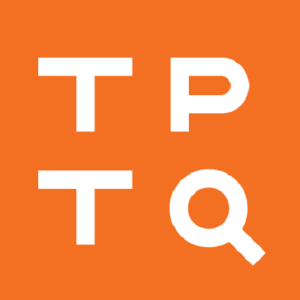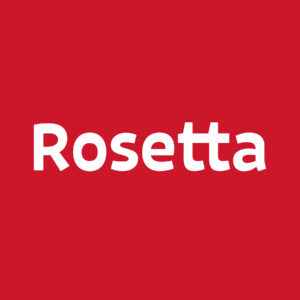The Argument(s) Against the “Tree of Life” Paradigm for Script Evolution
As some of you know, I’ve launched the Red List initiative—the effort by the Endangered Alphabets Project to identify every script in current use and assess to what degree each one is thriving or threatened.
Much of what we’re finding is highly-focused and local—fascinating scripts we never knew existed. But we’re also making some even more thought-provoking big-picture discoveries.
In the West, as this diagram illustrates, we say that The Alphabet—as if there is only one—grew out of Egyptian/Semitic/Babylonian roots and spread organically across the world, as if writing were such a good idea that everyone recognized it and adopted it, all the world’s scripts evolving from that original alphabetic trunk like those Tree of Life diagrams that show all the world’s life forms branching off and flourishing in their own ways.
First of all, as I explained in my recent Zoom series, evolution is a biological concept, not a linguistic one. As applied to a language or a script, it is a kind of metaphor, and a very misleading one.
Secondly, in its pride in demonstrating the spread of one writing system the diagram completely ignores the fact that there were two other birthplaces of writing: China and Mesoamerica. In those places, writing developed for very different reasons and took on very different forms. Our Eurocentric perspective gives them neither recognition or respect, even though, for example, Confucius was writing philosophy before Northern Europeans, as far as we know, were writing anything.
Thirdly, we may not realize it, but this diagram and the myth of script evolution is essentially not only a Eurocentric but a a colonial perspective: it equates the spread of writing with the spread of literacy, of civilization. The peoples shown or implied on this diagram had their own “pre-discovery” culture, language and, in some cases, script, but this is glossed over. The arrival of The Alphabet (so the narrative implies) was a boon, an improvement, the doorway to higher consciousness and broader horizons.
So now here’s a statistic from our Red List research that throws what we Brits call a spanner into the smooth movement of that storyline. We have identified roughly 300 scripts that are to some degree in use today. Of these, fully 140, or nearly half, are not offshoots of that tree but have been invented by individuals on behalf of their communities. Moreover, roughly half of those home-made scripts have been created in the past 75 years.
That raises at least four questions:
(a) If writing spreads organically and adapts or is adapted to local conditions, why would anyone need to re-invent writing?
(b) Why have so many of these home-grown writing systems struggled to survive (as indeed they have)?
(c) Why have linguists and administrators typically dismissed new scripts and spoken of them with disdain or even contempt; and
(d) Is it possible that some of these new scripts are—blasphemy of blasphemies—better than The Alphabet?
I have answers to all four questions, and they add up to 27,500 words. So I’m going to have to give you the bullet-point version, and you’ll have to wait for the third edition of my book Endangered Alphabets to see the full panorama.
Here goes.
(a) Writing does indeed spread like a good idea, but has also spread as the expression of religions or the communications machinery of armies. Many a culture has had The Alphabet (and now we’re using that phrase to include not only alphabets like Latin, Arabic or Cyrillic but other non-alphabetical imperial forms such as Chinese) introduced or imposed willy-nilly as part of a conscious program of cultural suppression or genocide. (Just ask, for example, the Mayans.) Implying, as the diagram does, this smooth continuity of transmission ignores the cultures of the defeated. In 140 of those cultures, sooner or later someone has come to resent that imposition, and/or has been all too aware that The Alphabet can’t represent the full and glorious range of its spoken tones. In a sense, then, to quote Jefferson Starship, many of those 140 neoscripts are blows against the empire.
(b) Of course, even the astonishing and laborious linguistic act of creating a writing system is easier done than implemented. Every newly-created alphabet is endangered in the sense that every newborn animal is in danger. Colonial administrators are likely to regard the new script as a threat, and in fact we know of at least four script creators who have been killed for their trouble. Even in post-colonial societies, colonial attitudes remain, and it is not at all uncommon for governments to argue that indigenous languages and scripts make their citizens appear boorish and provincial to the rest of the world, and thus insist on using English, French or Arabic in particular as the official medium of instruction. What’s more, many communities are divided on the value of learning a new script, so all in all, the odds are stacked against new scripts even if they are perfectly workable.
(c) Piers Kelly, one of the very few academics to do actual field work in indigenously-created scripts, reports that the very experts who might be best equipped to study emerging writing systems tend instead to disparage them, on several grounds. One, it’s a common attitude in linguistic circles that neoscripts didn’t “evolve naturally,” and are thus “artificial” or “secondary.” Two, new scripts (they say) simply add a distraction to the more important goals of orthography development (which is usually in a version of The Alphabet) for minority languages, and ultimately literacy in these languages. And then, as if to squash further dispute, it is pointed out that very few neoscripts are successful, so why bother studying them if they may fade away as soon as their creator/teacher dies? Well, that’s a self-fulfilling prophecy if ever I heard one.
(d) But are some of these inventions “better” than the established alternatives? I answer in the vernacular: Hell to the yeah. Some are based on culturally-familiar graphic forms so the community has a sense of ownership and belonging. Some use mnemonic shapes that are easily recognizable and thus easy to learn—something nobody has ever said about the Latin or Chinese scripts. Some embody spiritual forms and thus have a profundity of graphic meaning we can’t even comprehend. And in social terms, some entirely overturn the notion that the colonial script is the gateway to literacy. Lilly Aissatou Adlam recently told me that the newly-created Adlam script had utterly transformed her life, as it has transformed the lives of many young women who in traditional Muslim cultures would not be taught to read and write.
“Adlam is giving me wings,” she wrote. “My family, the walls of my place are all journeying with me now. The more I proceed to go forward, the more I find binds holding me tight to Adlam and to my culture. I am eager to teach our script, one day, somewhere in Africa or in America.
“Reading in Fula, writing in Fula is like quenching my thirst under a hot sun. Adlam is the water (script) that saved me (my people) from vanishing.”
All of which is not to say that the diagram is wrong; but it is both incomplete and misleading.
It is incomplete in that ignores, as is all too common, both many traditional writing systems and all the non-traditional, home-grown ones (except Hangul, which is somewhat misleadingly shown as having evolved from Phags-Pa). And in doing so, it perpetuates a host of assumptions about value.
It is misleading in that represents a truth I learned early on in my work on the Endangered Alphabets: history is written by the winners–in the alphabet of the winners. The sooner we start examining writing from the points of view of all cultures, not merely the dominant ones–and the Red List, we hope, will provide a starting-point for this–the sooner we’ll understand exactly how the transmission of writing, and in fact writing itself, actually works.
This post is sponsored by our friends at Typotheque, Rosetta, and Solidarity of Unbridled Labour.




